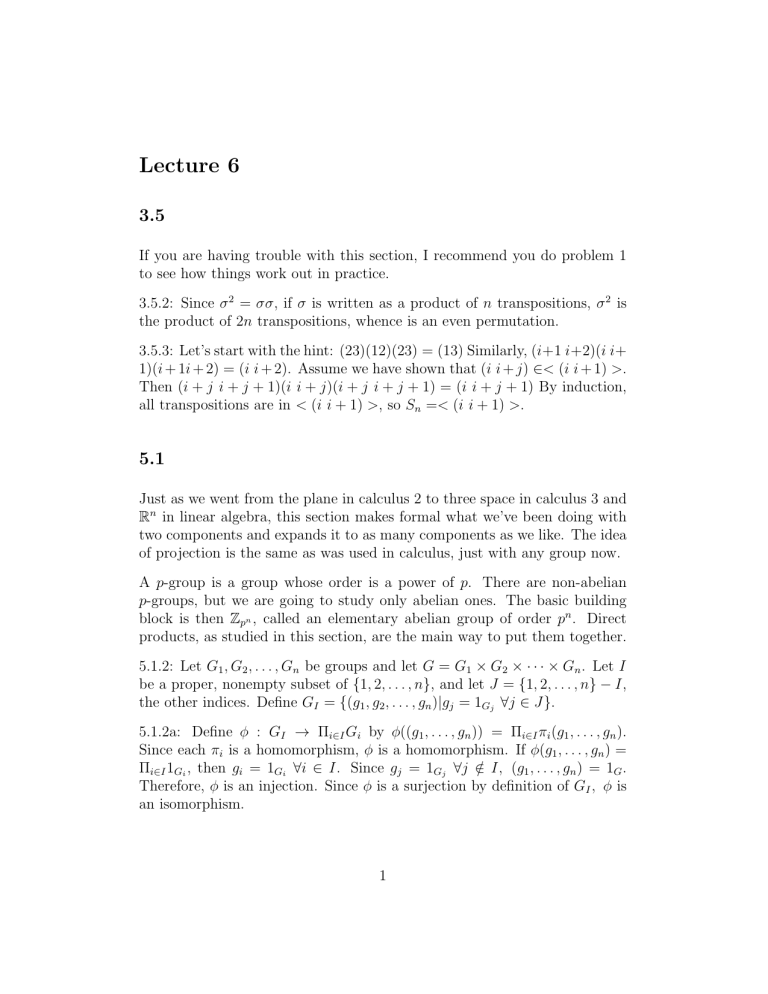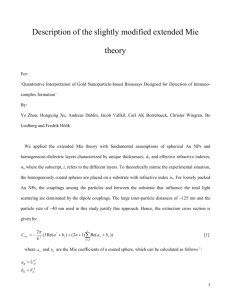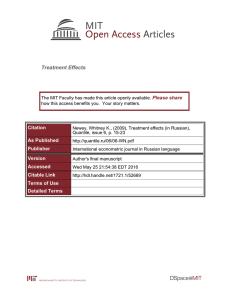Lecture 6 3.5
advertisement

Lecture 6
3.5
If you are having trouble with this section, I recommend you do problem 1
to see how things work out in practice.
3.5.2: Since σ 2 = σσ, if σ is written as a product of n transpositions, σ 2 is
the product of 2n transpositions, whence is an even permutation.
3.5.3: Let’s start with the hint: (23)(12)(23) = (13) Similarly, (i+1 i+2)(i i+
1)(i + 1i + 2) = (i i + 2). Assume we have shown that (i i + j) ∈< (i i + 1) >.
Then (i + j i + j + 1)(i i + j)(i + j i + j + 1) = (i i + j + 1) By induction,
all transpositions are in < (i i + 1) >, so Sn =< (i i + 1) >.
5.1
Just as we went from the plane in calculus 2 to three space in calculus 3 and
Rn in linear algebra, this section makes formal what we’ve been doing with
two components and expands it to as many components as we like. The idea
of projection is the same as was used in calculus, just with any group now.
A p-group is a group whose order is a power of p. There are non-abelian
p-groups, but we are going to study only abelian ones. The basic building
block is then Zpn , called an elementary abelian group of order pn . Direct
products, as studied in this section, are the main way to put them together.
5.1.2: Let G1 , G2 , . . . , Gn be groups and let G = G1 × G2 × · · · × Gn . Let I
be a proper, nonempty subset of {1, 2, . . . , n}, and let J = {1, 2, . . . , n} − I,
the other indices. Define GI = {(g1 , g2 , . . . , gn )|gj = 1Gj ∀j ∈ J}.
5.1.2a: Define φ : GI → Πi∈I Gi by φ((g1 , . . . , gn )) = Πi∈I πi (g1 , . . . , gn ).
Since each πi is a homomorphism, φ is a homomorphism. If φ(g1 , . . . , gn ) =
Πi∈I 1Gi , then gi = 1Gi ∀i ∈ I. Since gj = 1Gj ∀j ∈
/ I, (g1 , . . . , gn ) = 1G .
Therefore, φ is an injection. Since φ is a surjection by definition of GI , φ is
an isomorphism.
1
5.1.2b: Let g = (g1 , . . . , gn ) ∈ GI , and let h = (h1 , . . . , hn ) ∈ G. Since each
Gi is a group, hgh−1 ∈ GI and GI is normal in G. Define ρ : G → GJ by
ρ((g1 , ..., gn ) = (h1 , ..., hn ) where hj = gj ∀j ∈ J and hi = 1Gi ∀i ∈ I. By
definition ρ is surjective.
(
gj pj if j ∈ J;
ρ((g1 , ..., gn )(p1 , ..., pn )) = ρ(g1 p1 , . . . , gn pn ) =
1Gi
otherwise
(
gj
=(
1Gi
(
if j ∈ J
pj
)(
otherwise.
1Gi
if j ∈ J
) = ρ(g1 , ..., gn )ρ(p1 , ..., pn ).
otherwise
Thus ρ is an epimorphism. (g1 , ..., gn ) ∈ ker ρ if and only if ρ(g1 , ..., gn ) =
Πj∈J 1Gj if and only if (g1 , ..., gn ) ∈ GI . By the first isomorphism theorem
G/GI ∼
= GJ .
5.1.2c: Note that GI ∩ GJ = 1G since I ∩ J = ∅. Therefore, every element
of G can be written uniquely as xi yj where xi ∈ GI and yJ ∈ GJ . Thus
σ : G → GI × GJ by σ(xi yj ) = (xi , yj ). By part b and GI ∩ GJ = 1G , xi yj =
yj xi . Thus σ((xi yj )(x0i yj0 )) = σ(xi x0i yi yi0 ) = (xi x0i , yi yi0 ) = (xi , yi )(x0i , yi0 ) =
σ((xi yi ))σ((x0i yi0 )). Therefore σ is a homomorphism. If (xi yi ) ∈ ker σ, then
(xi , yi ) = (1GI , 1GJ ) and xi = 1GI , yj = 1GJ , whence xi yj = 1G and σ is an
injection. By definition of σ, σ is onto, so σ is an isomorphism as claimed.
5.1.3: Let I and K be any disjoint, non-empty subsets of {1, 2, ..., n}. Let
GI and GK be as defined in problem 5.1.2. By 5.1.2b, GI and GK are both
normal in G. Since xyx−1 y −1 ∈ GI ∩ GK = {1G }, xy = yx.
5.1.5. Let H =< (i, 1) >= {(i, 1), (−1, 2), (−i, 3), (1, 0). Then
< j, 0 >< i, 1 >< −j, 0 >=< j, 0 >< −k, 1 >=< −i, 1 >∈
/ H. Therefore, H
is not normal in Q8 × Z4 .
2







